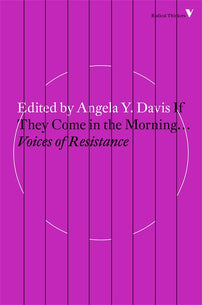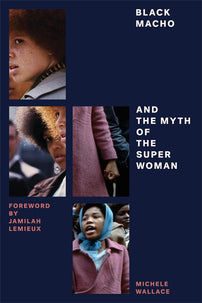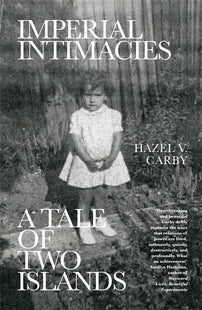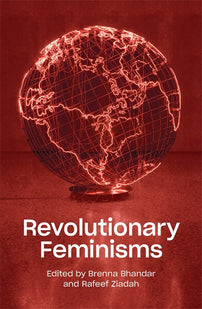The Forgotten Legacy of Claudia Jones: a Black Communist Radical Feminist
Ashley Roach-McFarlane recovers a portrait of a forgotten radical, and founder of the Notting Hill Carnival

Over time, the achievements of revolutionaries such as Claudia Jones has, unfortunately, become a footnote in the pages of history books. When considering the colossal impact of Black radical feminist intellectuals and activists such as Kathleen Cleaver, Angela Davis and Assata Shakur, arguably, Jones does not deservedly receive the same level of recognition. There is a need to ‘reintroduce’ Claudia Jones and all of her political organising and work, including her important role in establishing the Caribbean Carnival that later evolved into Notting Hill Carnival after her death.
Buried, quite literally, to the left of Karl Marx in Highgate Cemetery, Jones’ politics are best represented by her commitment to poor Black women workers and their ‘super-exploitation’, as well as the practise of “taking space” as Black political resistance.
Claudia Vera Cumberbatch (Cumberbatch being her given name) was a Black Immigrant working-class woman. Born in Belmont, Port-of-Spain in Trinidad 1915, her radicalisation can be traced to two points in her life: the first being when she arrived in Harlem, New York in 1924 and the second through the observation of the exploitative work performed by Black women workers within both her family and the broader community.
Upon arrival in Harlem, Jones faced the immediate intersecting relationship between race, class and gender alongside witnessing the rise of the Universal Negro Improvement Association, and the upsurge of the Communist Party USA (CPUSA). She was immediately racialised and quickly came to understand that she was the “other”, her identities existing only in relation to the White, the Man, and capitalism, and not as ends in themselves. Looking within her immediate family, the understanding of reality in America was cemented and compounded by seeing the oppression her mother endured as a Black woman worker. Her mother, Sybil Cumberbatch, died, in essence, from the sheer exhaustion of working long hours in a Harlem garment factory, all whilst caring for her immigrant family and combating racism in the United States. In response, Claudia came to identify as a Black communist woman.
Her time within the CPUSA further developed her Marxist-Leninist politics. An adept writer, organiser and theoretician, she utilised her position in the party to advocate for poor Black women workers, bringing together theoretically: race, class, gender and anti-imperialism. Although her approach highlighted the limitations of the CPUSA, she remained determined to develop this intersectional ideological framework for Black radical feminists to further expand upon.
As Angela Davis later noted in Women, Race and Class, “Claudia Jones was very much a Communist - a dedicated Communist who believed that socialism held the only promise of liberation for Black women, Black people as a whole and indeed for the multi-racial working class”. Before the Civil Rights movement, Jones’ influence within the CPUSA set the tone for future iterations of resistance movements. Her unique position afforded her the ability to analyse the particular problems that burdened Black women in relation to class and gender. Her influence on thinkers like Davis was prevalent within the party. These ideas would go on to shape the politics of second-wave feminists that struggled against racial and gender oppression in the 1970s and beyond.
Because of Jones’ experiences, she always linked the women’s rights struggle to the communist struggle. As part of her leadership within the CPUSA, Jones advocated for more Black women to be present within leadership positions in the party. Claudia saw Black women already operating within leadership positions, such as within the church, community, and sororities. She continues by articulating that this militancy arises from the particular locations and issues of Black women, which, because they are neglected by the left, limit the full extent of their political articulation. She was critical of progressives – especially trade unionists - for failing to address Black domestic workers efforts to organise themselves. She argued that many Black women at this time were still employed in domestic service and that the paternalistic attitudes toward maids influenced the prevailing social definition of Black women as a group.
Before the scholar Kimberle Crenshaw coined the phrase “intersectionality”, Jones theorised the ‘super-exploitation’ that poor Black women were subjected to under capitalism. In her seminal work titled “An End to the Neglect of the Problems of the Negro Woman!”, published in 1949, Jones helped develop the foundational theoretical framework that many intersectional feminists subscribe to today. In this essay, Jones draws from the observations of poor Black women, supported by her forensic study of pay disparities between Black women and White women:
“The super-exploitation of the Negro woman is thus revealed not only in that she receives, as a woman, less than equal pay for equal work with men, but that the majority of Negro women get less than half the pay of white women… the low scale of earnings of the Negro woman is directly related to her almost complete exclusion from virtually all fields of work except the most menial and underpaid, namely, domestic work”.
Jones framed the super-exploitation of poor Black women squarely in its historical roots of slavery and exploitation: “it is impossible within the confines of this article to relate the terrible sufferings degradation undergone by Negro mothers and Negro women generally under slavery … subjected to legalised rape by the slaveowners, confined to slave pens, forced to march for eight to fourteen hours with loads on their backs and to perform back-breaking working even during pregnancy”.
For Jones, domestic work was a continuation of the super-exploitation of poor Black women. She saw the liberation of the Black domestic worker as crucial for any liberation movement to be successful. Up until the 1950s, most Black women toiled in the domestic sphere, and Jones felt it was important to fight against the relegation of Black women to domestic service. She asserted that like any other worker, domestic workers should be organised and the emancipation of women from household drudgery was paramount to the liberation of all. She posited that: “the lot of the domestic worker is one of unbearable misery. Usually, she has no defined task in the household where she works. Domestic workers may have ‘thrown in’ in addition to cleaning and scrubbing”. Importantly, Jones’ theory did not fail to distinguish between exploitation, which Marxism understands as stemming from class relationships under capitalism, and oppression.
Due to her organisational skills and unrivalled writing, Jones garnered the attention of the carceral arm of the United States and was arrested in 1948. She fell victim to McCarthyite hysteria and as a result was deported to the U.K in 1955. Criminalised for her ideology by the Smith Act of 1940, this law “made it a criminal offence to advocate the violent overthrow of the government or to organise or be a member of any group or society devoted to such advocacy”. Jones’ deportation was not due to committing a grave crime, but for organising as an outspoken Marxist:
“I was deported from the USA because as a Negro woman Communist of West Indian descent, I was a thorn in their side in my opposition to Jim Crow racist discrimination against 16 million Negro Americans in the United States … I was deported because I urged the prosecution of lynchers rather than prosecution of Communists and other democratic Americans who oppose the lynchers and big financiers and warmongers, the real advocates of force and violence in the USA”.
Upon arriving in the U.K in 1955, Jones continued the work she had begun in the CPUSA. Now ‘doubly or triply diasporised’, Jones sought to galvanise the Caribbean diaspora within the U.K. She understood the political importance of creating a space to foster discourse that challenged the oppressive nature of capitalism and to articulate the oppression and violence Back people faced and were subjected to in the U.K. Founded in 1957 and launched in March 1958, Jones, alongside Amy Ashwood Garvey founded the West Indian Gazette (The WIG). To understand the achievements of the WIG, we must place it in its proper socio-political context. The WIG was conceived and birthed in a time of deep and open racism in Britain. Landlords would not rent their properties to ‘coloured’ people. Calls for the control of Black immigration were persistent and The British Union of Fascists openly paraded around Brixton. The WIG had its roots in British racism and saw itself as directly combating that racism.
The WIG helped develop the politics of Caribbean people in Britain, Jones herself saw it as “a major effort to stimulate political and social thinking”. The paper had become a vector for communicating on the gains of various independence movements situated in the Black diaspora. Jones drew from her experience writing for the CPUSA journal and as such, the WIG’s political narrative was anti-imperialist in orientation, pan-Africanist in politics feminist in its leadership and the concern for women. Such a space carved out the theoretics of the Caribbean diaspora and later those from Afro-Asian communities.
Jones' use of space shows that through organisation and a clear ideological framework, Caribbean’s and Afro-Asians can thrust their concerns into the mainstream. Jones intended for the WIG to be the epicenter of political organisation and cultural exchange. The on the ground engagement solidified the grassroots politics of Jones. The WIGs cultural output was so expansive that it regularly featured renowned theoreticians such as Franz Fanon, Nelson Mandela and James Baldwin, connecting the daily struggles of Black immigrants in the U.K to the ongoing struggle against racism, imperialism and colonialism globally.
Fundamentally, the WIG was to act as a site for the development of Caribbean culture in London – “a forum for debate, allowing West Indians to express their uncertainties and confusions in the wake of the Notting Hill Race Riots of 1958”. Arguably, what we phrase as the ‘Black British discourse’ finds its origin in the work of the WIG. One of the most notable achievements of Jones and the WIG was acting as the sponsor and fundraiser for London's first Carnival, widely accepted as Jones's most prolific achievement.
Carnival emerged as a response to the ongoing racism experienced by Black people in the U.K. The hostile environment established by the British government sought to make life in the U.K unbearable for its Black immigrant population, which subsequently resulted in the murder of Kelso Cochrane, a young Black Antiguan Carpenter who was viciously murdered in a racist attack in May 1959. Cochrane's murder took place in Notting Hill, where the previous year race riots had broken out. Sustained racist tropes, policies that ghettoised the Black migrant population as well as the bombardment of literature advocating for the repatriation of Black migrants set the scene for this violent clash between racist antagonists and the Black migrant population. Cochrane’s murder epitomised the British states distain and neglect of its Black immigrant population.
The riots also had a profound impact on West Indian identity and marked the beginning of the development of a common Black ancestry for Black people living in Britain. Jones theorised that her Carnival would fulfil two aims: the first, the creation of a community of West Indian people that would resist racist attacks, the second, it showcased the creative and artistic contribution West Indian people produced to enrich British culture. This development of Black British identity, constructed through the experiences of Carnival, can be closely attributed to Jones’ work.
Jones’ Caribbean Carnival is the spiritual and physical representation of Black resistance in the U.K, largely drawing inspiration from the Carnivals developed in Trinidad and Harlem, New York. Jones saw the development of Carnival and its cultural practice as resistance to Euro-American bourgeois aesthetics, imperialism, cultural hegemony, and political and racial oppression. The taking of space was an integral part of the rejection of oppression, for space offered visibility as well as a place to organise and mobilise. London’s first Carnivals coincided with the Trinidadian Carnival – originally being held in the winter months (January – March) and were originally held indoors. Jones saw Carnival as a vehicle for a political and cultural union between the Black diaspora in Trinidad and in the U.K. The WIG also acted as a sponsor for the first iterations of Carnival, a community project that could not be co-opted by outsiders, stressing the importance of “a people's art is the genesis of their freedom”.
The practice of Carnival was not lost on Jones as she saw it as a medium whereby culture and politics could intersect. Carnival would then find its way to the streets of Notting Hill – one year after Jones death. Moving to the streets of London practised taking space as an act of resistance. Carnival did not just represent the creative aspects of the Black community, but it demonstrated the articulation of defiance. Acting defiantly in the face of a contemptuous state aimed to combat the intimidation of the Black diaspora and encourage the formation of a cohesive anti-racist political movement. Carnival represented exactly what Jones suggested it was – the “spirit of a people that cannot be contained, that which therefore contains the genesis of their own (self-articulated) freedom”.
We must take this opportunity during Women’s history month to remember and pay tribute to a revolutionary thinker who, for decades, has shaped Black radical feminist discourse within the U.K and the United States. Her work and the work of those dedicated to memorialising her, has enabled her teachings to transcend space and time. The liberation of society’s most exploited is paramount to the liberation of all. Space and time are core motifs that constantly feature in the life of Claudia Jones. Her time watching the oppression of poor Black women radicalised her. The time she spent in the CPUSA honed her theoretical orientations. Her deportation, due to the obfuscation of democracy and political expression, distorted the space she occupied in the history of the United States.
She understood the importance of space as being an environment in which political thought, community and resistance could flourish. Developing Carnival can be viewed as the manifestation of occupying space as a means of resisting imperialism. For this reason, “taking space” is solidified as being an integral part of Black working-class resistance. If Carnival occupied physical space; then the WIG would occupy intellectual space, as the newspaper Jones developed aimed to collate the collective thoughts and concerns of Black people oppressed by the British state. It sought to make sense of the political landscape of Britain during its inception. It was a tool used for community building as well as radicalisation.
Space as resistance manifests as the disruption of the status quo. As a Black immigrant woman, she understood that those that are engaged in liberation movements must occupy space. We saw this in 2020’s BLM protests. The occupation of space was a key part of protests as it demonstrated a world-wide multi-ethnic coalition of people protesting police brutality and racial injustice. Spanning from Minneapolis, Minnesota, to the American Embassy in London; the mass organisation of protestestors on a global scale highlights the power of the “taking of space” – those who take space are forced to be seen and heard.
Jones’ politics was primarily focused on the experience of poor Black women. Within this group, Jones saw the crushing manifestation of capitalism materialise. For Jones, the poor Black woman received limited attention or analysis. During her time with the CPUSA, Jones achieved a great deal: she was an exceptional leader and theoretician; rising through the ranks of the CPUSA, she felt it necessary for the party to reflect and organise poor black women. Arguably, her most notable achievements were in the U.K. The WIG was the embodiment of Black British consciousness and Carnival was the rejection of British hegemony and assimilation.
The super-exploitation of poor Black women that Jones discussed can be further extended to all racialised working class women. She advocated for liberation of domestic workers from the drudgery of household work. We can see her politics manifest now within a global health crisis, whereby the majority of domestic work is carried out by poor racialised women. For Jones, such work compounded the reality of poverty and exploitation. Within the context of a global pandemic, domestic workers labour for long hours, operate in unsafe work spaces and with no clearly defined tasks.
Domestic workers not only are responsible for the upkeep of the employers homes or even work places, but also their own homes and families, further exacerbating spreading illnesses to their families. Jones witnessed the death of her mother due to being a garment worker in Harlem, an event that ultimately radicalised her and shaped her political orientation. Domestic workers are central to our political economy, both at the time of Jones’ activism and now. Once relegated to a ‘low-skilled job’, domestic workers have now been ‘promoted’ to essential workers. Operating in the informal economy, Jones recognised that if domestic workers could not escape the drudgery of their work, then they should be organised. This unionisation that Jones spoke of illustrates how her politics can be relied upon now as she articulated for the organisation of domestic workers thus legitimising their work.
Being buried to the left of Karl Marx exemplified Jones’ activism and political work. Whilst she rooted her writing in Marxist-Lennist teachings, her initial and constant point of reference was focused on the super-exploitation of poor Black women. This proximity to Marx symbolises her own challenge to the world. As Carol Boyce Davies suggests in Left of Karl Marx: The Political Life of Black Communist Claudia Jones: “Marx had not, in his time either had the imagination or the historical context to argue for the gendered black subject”. Her legacy lives on in the work of Angela Davis’ Woman, Race and Class, as Davis also highlighted the failure of progressive white women recognising that they also relegate Black women to domestic workers. Whilst women’s rights movements were taking off for white women, they did not seem to include the poor Black women employed as maids in their households.
Today and beyond, we honour the work of the revolutionary writer, organiser and activist Claudia Jones. The life of Claudia Jones was one underpinned by defiance. She dared to defy capitalist oppression, racism and sexism, risking her life to do so. For this reason, we must continue to draw inspiration from one of the earliest Black radical communist feminists and insist that “taking space” is an integral part of our resistance.
[book-strip index="1" style="display"]Ashley Roach-McFarlane is a writer and book club organiser. His blog, Resistance is Key, discusses issues around, politics, race, class and capitalism. He co-organises, Revolutionary Readers Club, a book club dedicated to the revolutionary teachings and writings of Black radicals.





